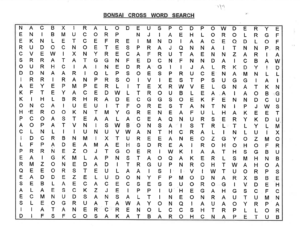Summertime is here and our trees get to grow, we get to style them and maintain them. Summertime however does have a downside, insects, and fungus. The first thing you want to do if you think a tree has a problem is move it away from your other trees. Then treat the problem. Insect issues can be treated with Insecticidal soap, you can also make your own. Neem oil and Pyrethrin are two other options that are natural and not chemical products. When treating insects several applications will be needed to eradicate them.
Aphids: Wilted-looking plants that aren’t thriving. Looking closer, dense colonies of tiny (1/32″ – 1/8″) soft-bodied, pear-shaped insects are seen, especially on tender growing tips and undersides. Young Aphids look like miniature adults and the whole family will be found chowing down together. Fungus Gnats: Small, dingy grey flies, flying around your Bonsai tree aimlessly. Fungus Gnats are easy to identify because they look just like, well… gnats. If these “flies” are also seen coming out of the soil around your tree, you probably have Fungus Gnats. Gnats are a pretty common problem with Bonsai trees because of the constant watering and therefore moist soil conditions. But they’re virtually harmless and easy to control. Most of the time, just letting the soil dry out a bit gets rid of them.
Spider Mites: Little yellow speckles on leaf surfaces. When you turn a leaf over, tiny, oval-shaped mites, about pinhead in size are scurrying around. Their eggs, best seen with a magnifying glass, will be scattered around at random. Spider Mite eggs are all perfectly round, the same size, ranging from clear to amber in color. With larger infestations, a fine webbing, crawling with mites, covers the plant tops. Soon, all the leaves are browning and dying. Spider mites are small and can be hard to spot on your Bonsai, but an easy way to know for sure is to place a piece of white paper under the branches and flick the leaves gently with your finger. It’ll be easy to spot the mites because they’ll try to make a getaway and you can easily see them move on the paper.
Mealybugs: Distorted leaves, generally weakened plants. Clusters of Mealybugs look like a cottony mass. It’s only on close inspection that you see that they’re individual insects. They’re soft-bodied and very slow-moving.
Thrips: Leaf surfaces finely speckled with yellow spots. Later, a silvery metallic-looking sheen may cover leaf surfaces. Not all Thrips create this sheen, but with or without sheen, you’ll also see black specks. Only on close inspection is the pest itself found. About 1/16″ long, thrips can move quite quickly for their size. Many gardeners report thrips as a small “worm with legs”. Larvae and adults look similar, but adults have wings and can fly.
White Flies: Tiny, pure white “moths” resting on leaf surfaces. When disturbed, these moth-like flies quickly flutter up, then settle back down onto the plant. Leaves may appear shiny with honeydew. A magnifier reveals clear-white “scales” (the pupae) on the underside of leaves. All stages of Whiteflies suck plant juices.
There are other insects that can affect trees but the above on average are the most common. Fungal issues also require spraying several times. Copper sulfate is a common product, some people have claimed success with 3% Hydrogen Peroxide in varying ratios to water is also effective. Below are some common funguses.
Black Spot: This fungus mostly attacks the foliage and will appear as black spots or patches on the leaves. Eventually, the leaves will yellow, shrivel, and drop off. Once a leaf is infected, it should be removed from the tree to prevent spreading. Spray healthy foliage with a fungicide. Since water will encourage spores to travel to other parts of the plant, it is important that you do not water your tree until after all the affected areas have been removed.
Leaf Spot: Similar to Black Spot, this fungus is characterized by white, black, brown, or grey spots (depending on the species), leaves, or small twigs and branches. Typically, blemishes will be white at first and then change to a darker color as the disease progresses. Eventually, lesions will develop, and foliage will wither and die. Any affected leaves, fruit, or branches should be removed, the soil cleaned of any debris, and healthy foliage sprayed with a fungicide.
Mildew: Mildew is a fungus that thrives in damp environments with insufficient sunlight and poor ventilation. A White (Powdery Mildew) or Black (Sooty mold) substance appears on the foliage, stems, or branches and can cause distorted growth, discoloration, and loss of vigor or dieback. Make sure to place your tree in an area with sufficient sunlight and ventilation.
Rust: This is a fungal disease that appears as yellow, orange, red, or brown raised bumps or blisters on the undersides of leaves. Eventually, the leaves will curl up and fall off. Although Rust infections are not usually fatal, they can cause severe damage to your tree. It is important to remove the affected area and treat the healthy foliage with a fungicide. Remember to place the plant in a well-ventilated area to prevent reinfection.
Prevention is something you can do to reduce the chances of fungus and insects. Systemic products are effective in preventing insects. Fungal issues can be reduced by making sure your trees are in the sun. When watering do not water overhead, you want to water the soil. Do not confuse this with misting foliage. The other important thing is to take time and look at your trees, rather examine them. This way you can detect the problem before it becomes a big problem.
Scott Russo



